
Native Plants and Their Uses
Plants are the most important resource the ‘atáaxum have. They have long provided us with food, shelter, clothing, tools, and medicine. Plants are utilized in the production of bows, arrows, brushes, baskets, hats, houses, mats, cradle-boards, fishing nets, carrying nets, granaries, seed beaters, digging sticks, ceremonial items, skirts, aprons, sandals, flutes, whistles, clapper sticks, and rattles. However, knowing what a plant is used for is only part of the story. Processing plant materials to make them useable requires time, knowledge, and skill.
Below is a list of some of the native plants that were—and are—most commonly used by the Pechaángayam and our ancestors:
As important as these plants are to us, please use caution if you decide to harvest them yourself. Some plants can hurt you if they are gathered and/or processed improperly, and others can easily be confused for similar poisonous plants.
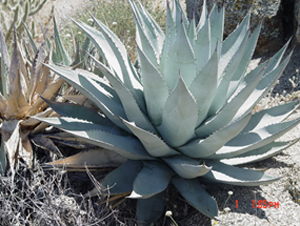
Agave (Agave deserti)
Agave leaves were processed for fiber and the stalk was gathered and processed just like the stalk of the yucca. Agave fiber is very coarse and strong and makes excellent sandals. Many people are allergic to agave sap and should use caution when first attempting to harvest or process this plant.
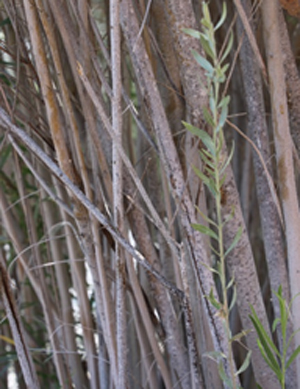
Arrow Weed (Pluchea sericea)
Arrow Weed received its name because its long slender stalks are ideal for making arrow shafts.
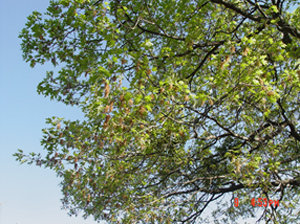
Black Oak (Quercus kelloggii)
The Black oak is a deciduous tree and produces a high-quality acorn that was one of our ancestors’ most important foods.
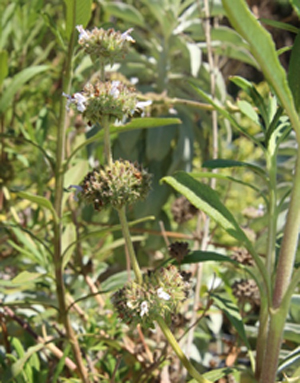
Black Sage (Salvia mellifera)
The seeds can be eaten raw or parched. The leaves were used to treat asthma and congestion.
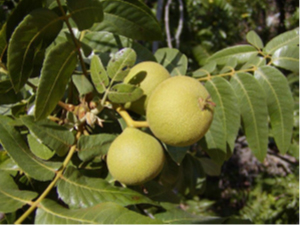
Black Walnut (Juglans californica)
The seeds can be eaten.
The shell can be used to make a very dark brown dye.
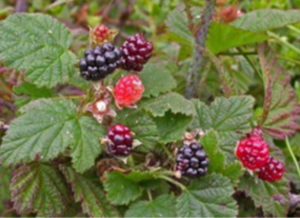
Blackberry (Rubus vitifolius)
Its berries are sweet and eaten raw, cooked, or dried.
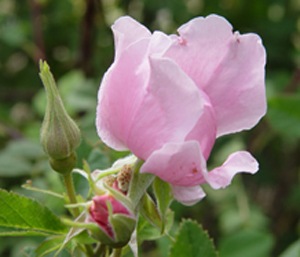
California Wild Rose (Rosa californica)
The seedpods (called rose hips) can be brewed into a tea high in Vitamin C.
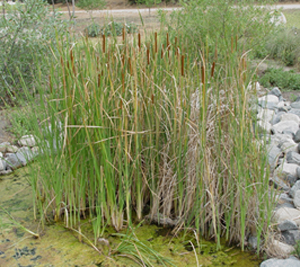
Cattail (Xanthium strumarium)
Cattail roots, pollen, and green seedpods are edible
when properly prepared.
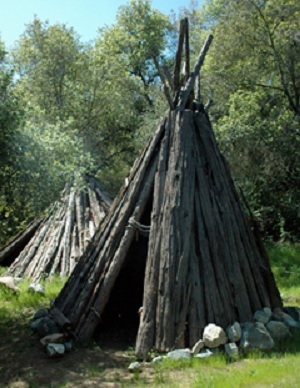
Cedar (Calocedrus sp.)
Cedar bark was stripped from dead trees and used to make Cedar bark houses (‘éesatal kíicha).
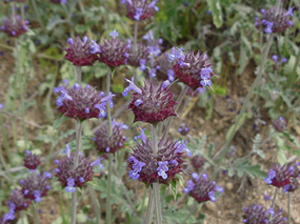
Chia (Salvia columbariae)
Chia is an important food source for our ancestors. Its highly nutritious seeds can be eaten raw, parched, or ground into a paste. The dry seeds can also be safely stored for a long time.
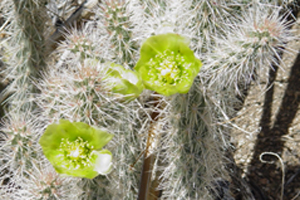
Cholla (Cylindropuntia sp.)
Cholla is known for its ability to heal burns. When prepared correctly, it helps reduce scarring and promotes rapid healing.
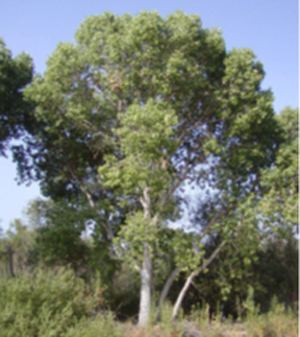
Cottonwood (Populus fremontii)
The wood of the cottonwood tree was used to make paddles, cradleboards, and canoes.
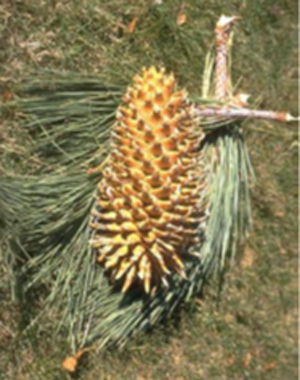
Coulter Pine (Pinus coulteri)
The Coulter Pine produces a very large cone with edible seeds. The shell of the seeds, which is very hard, can be used for making necklaces and ornaments.
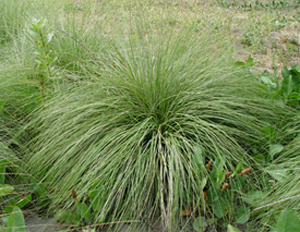
Deergrass (Muhlenbergia rigens)
Deergrass, which grows in tufts, is one of the plants used to make baskets in Southern California.
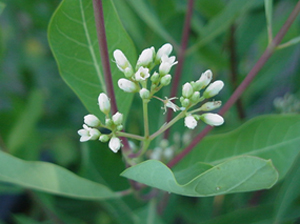
Dogbane (Apocynum cannabinum)
Dogbane or “Indian Hemp” is mostly known for the durable fiber that comes from the outer bark of dormant plants. The fiber can be spun into fine threads, cordage or rope. Dogbane leaves and sap are extremely poisonous, especially when the plant is green, so inexperienced gatherers should not attempt to harvest or process any part of it.
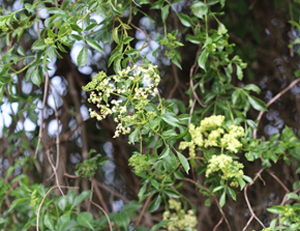
Elderberry (Sambucus mexicana)
Elderberry trees are very important because they are extremely versatile. Every part of the tree – the wood, roots, bark, leaves, flowers, and berries – is useful for a variety of purposes.
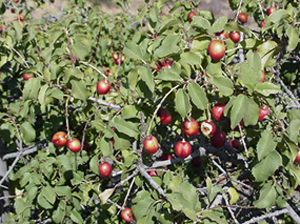
Holly Leaf Cherry (Prunus ilicifolia)
This native cherry was an important source of food.
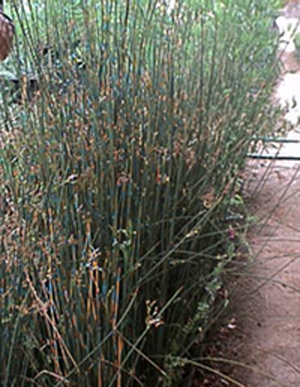
Juncus (Juncus acutus)
Juncus is one of the major materials used for weaving baskets. It is also be used to make mats.
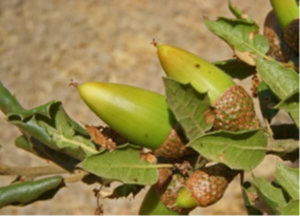
Live Oak (Quercus agrifolia)
The Live Oak grows abundantly along the coastal and interior regions of Luiseño Territory. Although Live Oaks do not produce the highest quality acorns, they are still edible and were eaten when there were shortages of Black Oak and White Oak acorns.
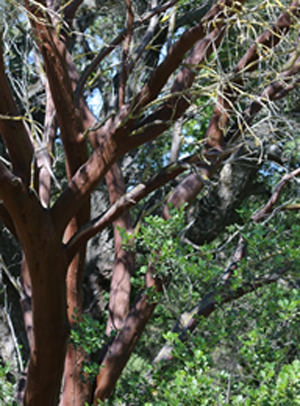
Manzanita (Arctostaphylos sp.)
The fruit of the Manzanita is sometimes eaten, and some people make cider or jelly from the berries. The Big Berry Manzanita produces a hard seed that is used for beads or inside rattles. The wood is very hard and difficult to work with, but it can be used for making tools such as awls and knife handles.
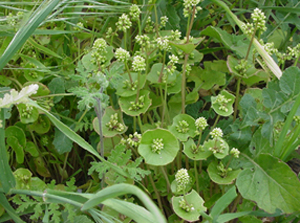
Miner’s Lettuce (Claytonia perfoliata)
Collected in February and March, Miner’s Lettuce is eaten raw and can be used to make or enhance salads. It is also sometimes used in soups or stews.
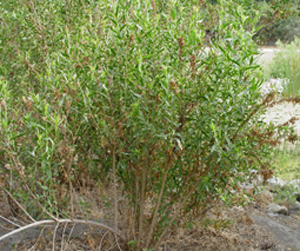
Mule’s Fat (Baccharis salicifolia)
Mule’s Fat produces straight stems that can be utilized as arrow shafts. Its stems can also be hollowed out and used as pipe stems.
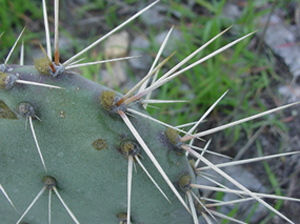
Prickly Pear Cactus (Opuntia phaeacantha)
The Prickly Pear cactus pads and fruit are both edible.
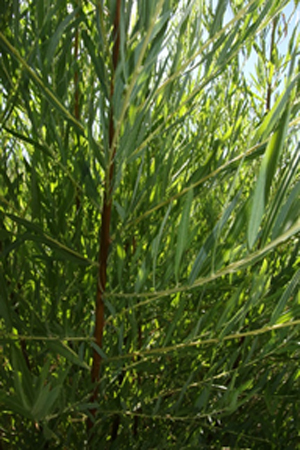
Red Willow (Salix laevigata)
Red Willow is common throughout California and has many uses. We use various parts of the willow tree in basket-weaving, rope-making, sandals, clothing, medicine, fuel, and house building.
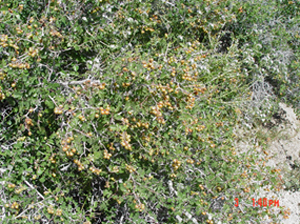
Sumac or Sour Berry (Rhus trilobata)
Sumac is one of the major sources of basket weaving material for many Southern California tribes. The plant also produces an edible berry.
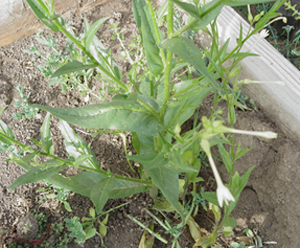
Tobacco
Tobacco leaves were dried and smoked in pipes. It was most often used during ceremonies.
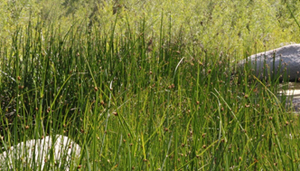
Tule (Schoenoplectus acutus)
Tule is a thick reed that grows in streams or lakes. The long cylindrical stalks are used to construct homes, canoes and mats. The young shoots can be eaten.
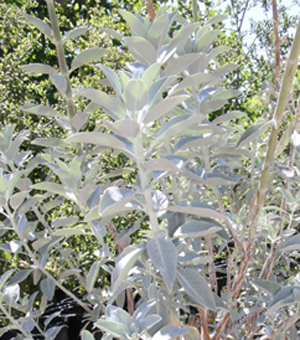
White Sage (Salvia apiana)
White sage is a member of the mint family. The seeds can be eaten raw or roasted just like Chia. The leaves of the White Sage have various medicinal values including aiding the relieving of congestion due to colds, allergies and asthma. The dried leaves are burned for spiritual cleansing.
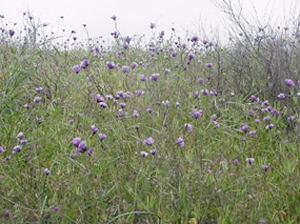
Wild Hyacinth or Indian Potato (Brodiaea pulchella)
The Wild Hyacinth produces a small bulb which is harvested for food. The bulb is boiled until soft and can be mashed or eaten whole. Amateur gatherers should not harvest wild hyacinths since they are easily mistaken for a highly poisonous plant known as a death-camas.
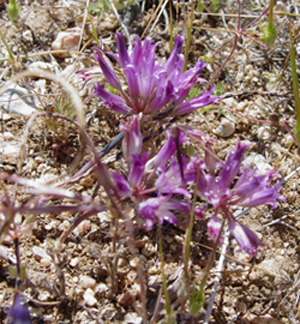
Wild Onion (Allium sp.)
Wild onions can be found throughout Luiseño Territory. Only the green stems are harvested, and they are used as a garnish in cooking or eaten alone.
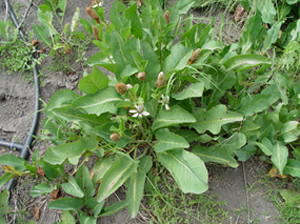
Yerba Mansa (Anemopsis californica)
Yerba Mansa leaves and roots have medicinal qualities. Tea from the roots was used to treat kidney problems or applied to the skin to cure fungal infections.
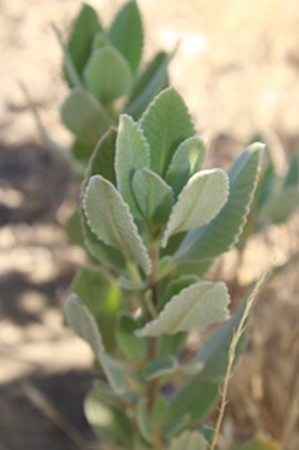
Yerba Santa (Eriodictyon crassifolium)
Yerba Santa is an important medicinal plant. The leaves were boiled to make a tea used in the treatment of colds and other respiratory infections.
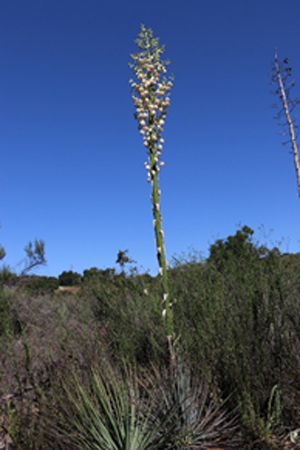
Yucca (Yucca sp.)
The many species of yucca that grow throughout Southern California are extremely important to Native people. Every part of these plants is useful. The young stalks, flowers, and fruit are edible. The leaves can be processed into fiber, which is used to make sandals, skirts, string, rope, brushes, mats, and basket starts. The sharp tips of the leaves can be used as needles.

